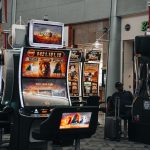Securing USA visa slots can be a crucial step in your travel or study plans. Here’s everything you need to know to navigate the process effectively:
1. Types of USA Visas
- Non-Immigrant Visas: These are for temporary stays, including tourist (B2), student (F1), and work visas (H1B).
- Immigrant Visas: For those looking to live permanently in the U.S., often sponsored by family or employers.
2. Understanding Visa Slots
- Limited Availability: Visa slots can be limited, especially during peak travel seasons or due to administrative backlogs.
- Appointment System: U.S. embassies and consulates often have an online appointment system for scheduling visa interviews.
3. How to Secure a Visa Slot
Step-by-Step Process
-
Determine the Right Visa:
- Identify which visa category suits your purpose (tourism, study, work, etc.).
-
Complete the DS-160 Form:
- Fill out the online DS-160 form, which is required for non-immigrant visas. Make sure all information is accurate and complete.
-
Pay the Visa Fee:
- Pay the required visa application fee. Keep the receipt as you’ll need it for your appointment.
-
Schedule Your Appointment:
- Visit the official U.S. visa appointment website for your country. Create an account and schedule your visa interview.
- Be prepared for limited availability. Booking well in advance can help secure a spot.
-
Prepare Required Documents:
- Gather necessary documents, such as:
- Valid passport
- DS-160 confirmation page
- Visa fee receipt
- Form I-20 or DS-2019 (for students)
- Financial documents
- Supporting documents related to your purpose of travel
- Gather necessary documents, such as:
-
Attend the Visa Interview:
- Arrive on time for your interview. Dress appropriately and be prepared to answer questions regarding your travel plans, financial situation, and ties to your home country.
4. Tips for Securing Your Visa Slot
- Check for Updates: Regularly monitor the embassy or consulate’s website for updates on appointment availability and any changes in procedures.
- Be Flexible: If slots are limited, be open to alternative dates or locations for your interview.
- Follow Up: If your application is pending or requires additional documentation, follow up promptly.
5. Handling Refusals
-
Understand Common Reasons for Refusals:
- Insufficient ties to your home country
- Incomplete documentation
- Inadequate financial proof
-
Reapply if Necessary: If denied, you can reapply after addressing the reasons for refusal. Consider consulting with an immigration attorney for guidance.
6. Consider Alternative Visa Options
- Explore Other Visa Categories: If you’re having difficulty securing a visa slot in your desired category, research other visa options that might be available to you.
Conclusion
Securing USA visa slots requires careful planning, accurate documentation, and proactive management of the application process. By understanding the steps involved and preparing thoroughly, you can improve your chances of success. Good luck, and may your journey to the U.S. be smooth and rewarding!




